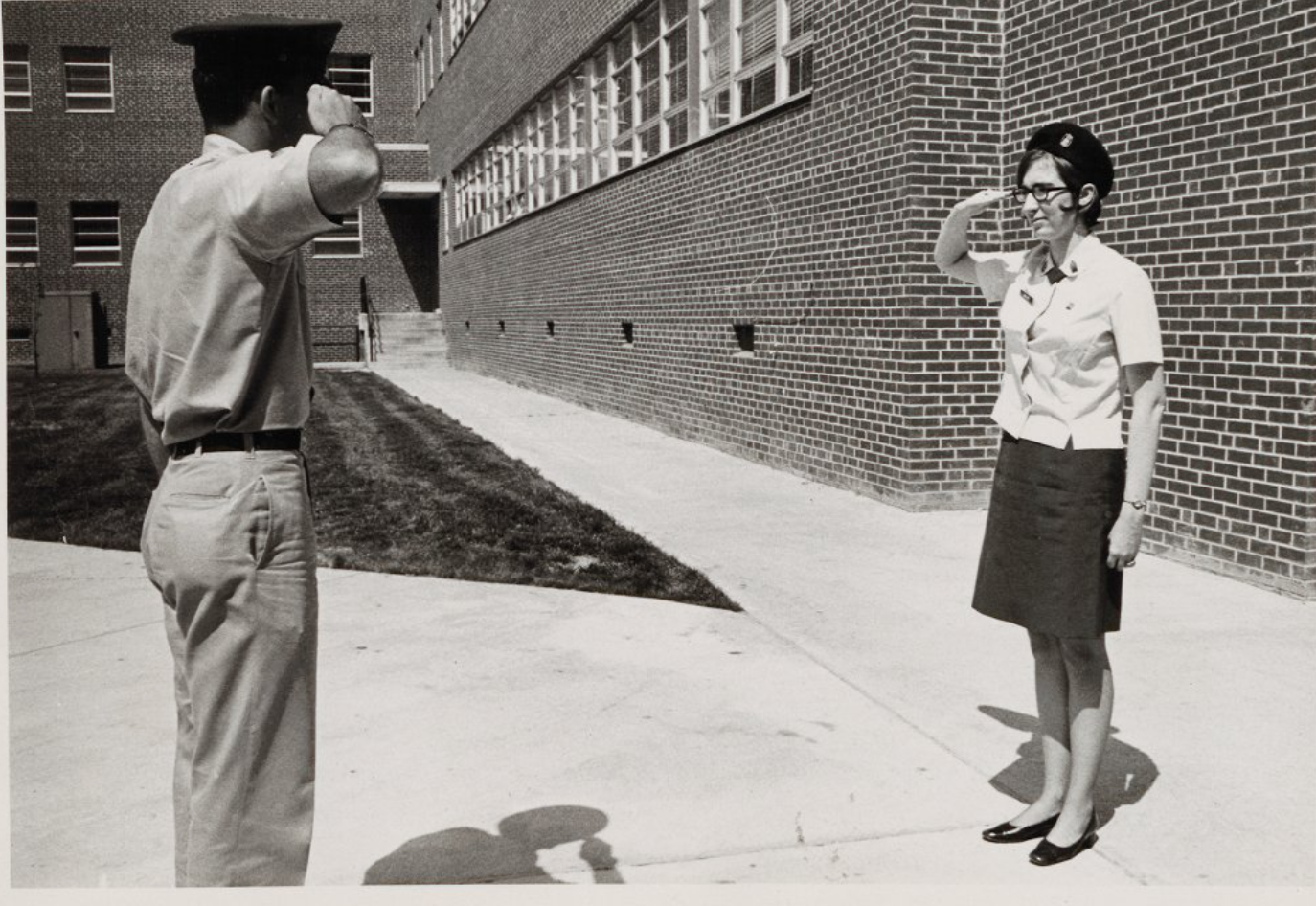Detachment 600 at East Carolina
East Carolina and the AFROTC
Source: Records of the Air Force ROTC Program
Joyner Library Special Collections, University Archives #UA25-15.
Digitized version available online in Joyner Library’s Digital Collections.
Staff Person: Brooke Tolar
Description: Today’s post features a Daily Reflector Press Release draft concerning the establishment of Detachment 600 at East Carolina. Cadets are currently gearing up to celebrate the 75th anniversary of the detachments founding which takes place in 2023. Visit Joyner Library’s Digital Collections page to view digitized images of items featured in this post.
The Air Force and the ROTC
The Air Force ROTC is a program that trains cadets to become Air Force Officers while simultaneously earning a college degree. The establishment of the United States Air Force and ROTC programs overlap and intertwine at several points. Technically, military training at designated institutions of higher learning (which would later transition into ROTC programs) began with the Land Grant Act of 1862. Several decades later, the National Defense Act of 1916 officially created and named the Reserves Officer Training Corps (ROTC). The Air Force, on the other hand, can trace its earliest roots to the Army Signal Corps which established an Aeronautical Division in 1907 and began testing its first airplane in 1908. As a result, the Army formed a unit dedicated exclusively to aviation in 1913, sending its first air combat unit to the Mexican border in 1916 (the same year that the ROTC was officially named).
Founding Detachment 600
Although U.S. servicemen conducted warfare from the skies during WWI (1914-1918) and WWII (1939-1945), the United States Air Force was not established as a separate military service until 1947. East Carolina Teachers College President, Dr. John Decatur Messick, and Lt. Col William Brown formed Detachment 600 the following year. Brown, subsequently, became the detachment’s first commander. Demonstrating the sense of excitement and support surrounding this new venture, the initial 76 cadets formed a Cadet Club, a Rifle Team, and held the first detachment military ball that year.
Success for Detachment 600

Advanced ROTC students attended a 6-week training camp in Orlando, Florida.
This Press Release draft, dated May 1949, emphasized the detachment’s successful first year. It went on to announce that thirty-three advanced students would be attending a six-week training summer camp in Orlando, Florida. East Carolina’s students were to join five hundred others from fourteen additional institutions of higher education. Anticipating further interest, the press release instructed applicants to write to the the College Registrar for more information.
As expected, interest in Detachment 600 increased over the coming years. Enrollment numbers, for example, skyrocketed from 76 to 286 by 1949. Additionally, the detachment succeeded in more than enrollment numbers. In 1950, the Fourteenth Air Force rated the detachment “highly satisfactory,” after a two-day inspection. Subsequently, enrollment numbers increased during the 1950s and the 1960s when the detachment averaged a registration of nearly 300 cadets.
In 1958, East Carolina began offering a Flight Instruction Program that provided 36.5 hours of flying time and thirty-five hours of academic instruction. As a result, certain cadets enjoyed new learning opportunities, enhancing their skills and experiences. Cadets in this program flew a 100 horsepower PA-12.
Angels and Detachment 600

Martha Van Hoy becomes the first female to fully enroll in Detachment 600.
Beginning in 1955, female students were allowed to enroll in Corps classroom work at East Carolina, but were not permitted to take part in drill. In 1969, Ms. Martha Van Hoy became the first female to join Detachment 600, making the detachment one of five in the nation to accept women at that time. Certainly, Martha Van Hoy’s enrollment marked a major change in Air Force ROTC history. Similarly, the Air Force itself was undergoing changes. The Women Airforce Service Pilots (WASPs) who trained and served during WWII received official military service status in 1977.
Detachment 600 and the Archives
Detachment 600 collaborated with University Archives to install a student-curated exhibit marking the 70th anniversary in 2018, and select members of the detachment are developing a commemoration campaign marking the 75th anniversary of the detachment’s founding set to take place in 2023.
Sources:
- Reflector Press Release, May 1949. Records of Air Force ROTC. UA25-15. University Archives, East Carolina University, Greenville,
- ECTC News Bureau Press Release, May 2, 1950. Records of Air Force ROTC. UA25-15. University Archives, East Carolina University, Greenville, NC.
- News Bureau of East Carolina College Press Release, October 21, 1959. Records of Air Force ROTC. UA25-15. University Archives, East Carolina University, Greenville, NC.
- “Sky Pirates,” 1955. Records of Air Force ROTC. UA25-15. University Archives, East Carolina University, Greenville, NC.
- Photograph of Martha Van Hoy, 1969. Records of Air Force ROTC. UA25-15. University Archives, East Carolina University, Greenville, NC.
- “Overview.” Airforce.com.
- “About AFROTC History.” Airforce.com.
- “Air Force History.” Military.com.
- “Female WWII Pilots: The Original Fly Girls.” National Public Radio Inc. March 9, 2010.